- Become A Member
- Gift Membership
- Kids Membership
- Other Ways to Give
- Explore Worlds
- Defend Earth

How We Work
- Education & Public Outreach
- Space Policy & Advocacy
- Science & Technology
- Global Collaboration
Our Results
Learn how our members and community are changing the worlds.
Our citizen-funded spacecraft successfully demonstrated solar sailing for CubeSats.
Space Topics
- Planets & Other Worlds
- Space Missions
- Space Policy
- Planetary Radio
- Space Images
The Planetary Report
The exoplanet issue.
The expanding frontier of discovery.
Get Involved
Membership programs for explorers of all ages.
Get updates and weekly tools to learn, share, and advocate for space exploration.
Volunteer as a space advocate.
Support Our Mission
- Renew Membership
- Society Projects
The Planetary Fund
Accelerate progress in our three core enterprises — Explore Worlds, Find Life, and Defend Earth. You can support the entire fund, or designate a core enterprise of your choice.
- Strategic Framework
- News & Press
The Planetary Society
Know the cosmos and our place within it.
Our Mission
Empowering the world's citizens to advance space science and exploration.
- Explore Space
- Take Action
- Member Community
- Account Center
- “Exploration is in our nature.” - Carl Sagan
Rae Paoletta • Mar 03, 2022
The best space pictures from the Voyager 1 and 2 missions
Launched in 1977, NASA’s Voyager 1 and 2 missions provided an unprecedented glimpse into the outer solar system — a liminal space once left largely to the imagination. The spacecraft provided views of worlds we’d never seen before, and in some cases, haven’t seen much of since.
The Voyager probes were launched about two weeks apart and had different trajectories, like two tour guides at the same museum. Only Voyager 2 visited the ice giants — Uranus and Neptune — for example.
The Voyagers hold a unique position in the pantheon of space history because they’re still making it; even right now, Voyagers 1 and 2 are the only functioning spacecraft in interstellar space. Both hold a Golden Record that contains sights and sounds of Earth in case alien life were to find one of the spacecraft.
As the Voyager missions voyage on, it’s good to look back at how they captured our solar system before leaving it.
This content is hosted by a third party (youtube.com), which uses marketing cookies. Please accept marketing cookies to watch this video.
The Time is Now.
As a Planetary Defender, you’re part of our mission to decrease the risk of Earth being hit by an asteroid or comet.
For full functionality of this site it is necessary to enable JavaScript. Here are instructions on how to enable JavaScript in your web browser .
- + Visit the NASA Portal
- + NSSDCA Home
- Photo Gallery Home
- About Photo Gallery
- Frequently Asked Questions
- What's New?
Voyager Index
This page is provided as an index to the many images which the Voyager 1 and 2 spacecraft have taken of solar system objects. These images appear on the pages for each object.
- Earth and Moon
- Solar System
Related Resources
- Frequently Asked Questions about the planets
- Jupiter page
- Saturn page
- Uranus page
- Neptune page
- Universe Exploration
- Heliophysics
- Solar System Exploration
- Image Resources
- + Privacy Policy and Important Notices
- + Download Adobe Reader
- NASA Official: Dr. David R. Williams
- Curator: Dr. Edwin V. Bell, II
- Version 4.0.1
- Last updated: 27 April 2015

Suggested Searches
- Climate Change
- Expedition 64
- Mars perseverance
- SpaceX Crew-2
- International Space Station
- View All Topics A-Z
Humans in Space
Earth & climate, the solar system, the universe, aeronautics, learning resources, news & events.

Hubble Examines an Active Galaxy Near the Lion’s Heart

NASA Prepares for Air Taxi Passenger Comfort Studies

Alphabet Soup: NASA’s GOLD Finds Surprising C, X Shapes in Atmosphere
- Search All NASA Missions
- A to Z List of Missions
- Upcoming Launches and Landings
- Spaceships and Rockets
- Communicating with Missions
- James Webb Space Telescope
- Hubble Space Telescope
- Why Go to Space
- Commercial Space
- Destinations
- Living in Space
- Explore Earth Science
- Earth, Our Planet
- Earth Science in Action
- Earth Multimedia
- Earth Science Researchers
- Pluto & Dwarf Planets
- Asteroids, Comets & Meteors
- The Kuiper Belt
- The Oort Cloud
- Skywatching
- The Search for Life in the Universe
- Black Holes
- The Big Bang
- Dark Energy & Dark Matter
- Earth Science
- Planetary Science
- Astrophysics & Space Science
- The Sun & Heliophysics
- Biological & Physical Sciences
- Lunar Science
- Citizen Science
- Astromaterials
- Aeronautics Research
- Human Space Travel Research
- Science in the Air
- NASA Aircraft
- Flight Innovation
- Supersonic Flight
- Air Traffic Solutions
- Green Aviation Tech
- Drones & You
- Technology Transfer & Spinoffs
- Space Travel Technology
- Technology Living in Space
- Manufacturing and Materials
- Science Instruments
- For Kids and Students
- For Educators
- For Colleges and Universities
- For Professionals
- Science for Everyone
- Requests for Exhibits, Artifacts, or Speakers
- STEM Engagement at NASA
- NASA's Impacts
- Centers and Facilities
- Directorates
- Organizations
- People of NASA
- Internships
- Our History
- Doing Business with NASA
- Get Involved
- Aeronáutica
- Ciencias Terrestres
- Sistema Solar
- All NASA News
- Video Series on NASA+
- Newsletters
- Social Media
- Media Resources
- Upcoming Launches & Landings
- Virtual Events
- Sounds and Ringtones
- Interactives
- STEM Multimedia

NASA Announces Winners of Inaugural Human Lander Challenge

In Space Production Applications News

NASA Shares Two New Moon to Mars Architecture White Papers

Unity in Orbit: Astronauts Soar with Pride Aboard Station

The 1998 Florida Firestorm and NASA’s Kennedy Space Center

Climate Interactives

NASA@ My Library and Partners Engage Millions in Eclipse Training and Preparation

Mapping the Red Planet with the Power of Open Science

NASA’s Mars Odyssey Captures Huge Volcano, Nears 100,000 Orbits

Pillars of Creation Star in New Visualization from NASA’s Hubble and Webb Telescopes

Hubble Captures Infant Stars Transforming a Nebula

An Eclipse Megamovie Megastar

Hypersonic Technology Project

NASA Engineer Honored as Girl Scouts ‘Woman of Distinction’

Amendment 22: Heliophysics Flight Opportunities in Research and Technology Final Text and Due Date

Augmented Reality Speeds Spacecraft Construction at NASA Goddard

Slow Your Student’s ‘Summer Slide’ and Beat Boredom With NASA STEM

NASA Kennedy Team Recognized During White House Sustainability Awards

Astronauta de la NASA Frank Rubio

Diez maneras en que los estudiantes pueden prepararse para ser astronautas

Astronauta de la NASA Marcos Berríos
Voyager 1 image of saturn.

Voyager 1 looked back at Saturn on Nov. 16, 1980, four days after the spacecraft flew past the planet, to observe the appearance of Saturn and its rings from this unique perspective. A few of the spokelike ring features discovered by Voyager appear in the rings as bright patches in this image, taken at a distance of 5.3 million kilometers (3.3 million miles) from the planet. Saturn’s shadow falls upon the rings, and the bright Saturn crescent is seen through all but the densest portion of the rings. From Saturn, Voyager 1 is on a trajectory taking the spacecraft out of the ecliptic plane, away from the Sun and eventually out of the solar system (by about 1990). Although its mission to Jupiter and Saturn is nearly over (the Saturn encounter ends Dec. 18, 1980), Voyager 1 will be tracked by the Deep Space Network as far as possible in an effort to determine where the influence of the Sun ends and interstellar space begins. Voyager 1’s flight path through interstellar space is in the direction of the constellation Ophiuchus. Voyager 2 will reach Saturn on August 25, 1981, and is targeted to encounter Uranus in 1986 and possibly Neptune in 1989. The Voyager project is managed for NASA by the Jet Propulsion Laboratory, Pasadena, California.
Image Credt: NASA/JPL
NASA's Voyager probes have been traveling through space for nearly 46 years. Here are 18 groundbreaking photos from their incredible mission.
- Nearly 46 years after their launch, Voyager 1 and 2 will likely soon reach the end of their scientific mission .
- NASA recently lost contact with Voyager 2 after sending it a bad command by mistake.
- Here are 18 pictures the probes took over the course of their forty-plus-year journey.

The Voyager probes are pioneers of science, making it farther into space than any other manufactured object. But now, they face a terminal problem: their power is running out.
The twin probes were originally sent on a four-year mission to tour the solar system, but they exceeded all expectations and are still going nearly 46 years later. That makes them NASA's longest-lived mission.
Scientists are now doing their best to keep the probes going for as long as possible. They recently found a clever hack to extend Voyager 2's life for another three years and plan to do the same with Voyager 1.
But these are old machines and NASA is constantly scrambling to fix mistakes. Last year, Voyager 1 started sending garbled data from the outside of the solar system. NASA ultimately figured out one of its computers had gone dead.
Voyager 2 is now in limbo , as the agency revealed Friday it had lost contact with the probe when someone sent a wrong command. It could be the end of Voyager 2's mission if NASA can't fix the mistake, which the agency probably won't be able to do before October.
As the probes are nearing the end of their scientific mission, here are 18 images from Voyager that changed science.
The Voyager probes were designed to visit Jupiter and Saturn.
The Voyager mission included two probes — Voyager 1 and Voyager 2 — which NASA launched in 1977 within a few months of each other.
NASA took advantage of a rare planet alignment to turbocharge their journeys into space.
NASA originally built the probes to last five years, but they have exceeded that lifespan many times .
As of August 20 and September 5, 2023, Voyager 2 and Voyager 1 will have been traveling for 46 years, respectively.
This is what Voyager 1 saw on its approach to Jupiter.
Voyager 1 and Voyager 2 reached Jupiter in 1979.
As they flew by the planet, they took about 50,000 pictures of Jupiter. These blew away scientists, as the quality of the pictures was much better than those taken from Earth, according to NASA.
These snaps taught scientists important facts about the planet's atmosphere, magnetic forces, and geology that would have been difficult to decipher otherwise.
The probes discovered two new moons orbiting Jupiter: Thebe and Metis.
They also spotted a thin ring around Jupiter.
The probe captured this picture as it was looking back at the planet backlit by the Sun.
Voyager 1 discovered volcanoes at the surface of Io, one of Jupiter's moons.
Next stop: Saturn.
In 1980 and 1981, the probes reached Saturn . The flyby gave scientists unprecedented insight into the planet's ring structure, atmosphere, and moons.
Voyager snapped Saturn's rings in more detail than ever before.
And showed every secret that Enceladus, Saturn's moon, had to offer.
Saturn, snapped as the probe flew away, was shown in a new light.
By 1986, Voyager 2 had made it to Uranus.
By 1986, Voyager 1 has finished its grand tour of the solar system, and few out towards space. But Voyager 2 kept on its exploring our nearest planets, passing 50,600 miles away from Uranus in January 1986.
Voyager 2 discovered two extra rings around Uranus , revealing the planet had at least 11, not 9.
Voyager 2 also spotted 11 previously unseen moons around Uranus.
Here is a picture of Miranda, Uranus's sixth-biggest moon.
Voyager 2 was the first spacecraft to observe Neptune from a close distance.
In 1989, 12 years after its launch, Voyager 2 passed within 3,000 miles of Neptune.
Here's Nepture taken by Voyager 2, in all its blue glory.

Voyager 2 took this unflattering pic of Triton's rough face.
It captured Triton, Neptune's moon in unprecedented detail.
And snapped Triton's southern hemisphere.
As it flew by, Voyager 2 uncovered Neptune's rings.
As its parting gift, Voyager 2 took this beautiful picture of light grazing Neptune's south pole.
This is Voyager 2's last picture. Since it wouldn't come across another planet on its ongoing journey, NASA switched off its cameras after its flyby of Neptune to conserve energy for other instruments.
Voyager 1 had one last trick up its sleeve.
As its last photographic hurrah in 1990, Voyager 1 took 60 images of the solar system from 4 billion miles away.
It gave us the Earth's longest selfie, dubbed the "pale blue dot."
This remains the longest-range selfie: a portrait of the Earth taken by a human-made probe from 4 billion miles away.
After this picture, NASA switched off Voyager 1's cameras to save energy. NASA could switch the probes' cameras back on , but it is not a priority for the mission.
Beyond the solar system
Though the probes are no longer sending pictures, they haven't stopped sending crucial information about space.
In 2012, Voyager 1 became the first human-made instrument to cross into interstellar space by crossing the boundary between our solar system and the rest of the universe, called the heliopause.
Voyager 2 was second, crossing that threshold in 2018 . The probe revealed that there was yet another layer outside of our heliosphere.
The probes keep sending back measurements from interstellar space, like weird hums likely coming from vibrations made by neighboring stars.
Even after their instruments are switched off, the probes' mission continues.
NASA is planning to switch more of the probes' instruments in the hope of extending their life to the 2030s.
But even after all their instruments become quiet, their mission will carry on. As they drift off, they will still be carrying a golden record that carries crucial information about humanity. If intelligent extraterrestrial life exists, they could use that information to reach out to us.
This article was originally published on June 6, 2022, and is being updated with the latest developments about Voyager 1 and 2.
- Main content
Voyager 1 to Take Pictures of Solar System Planets

NASA's Voyager 1 spacecraft, having completed its mission along with Voyager 2 to explore the outer planets, will use its cameras February 13-14 to take an unprecedented family portrait of most of the planets in our solar system.
The collection of images will be from a unique point-of-view -- looking down on the solar system from a position 32 degrees above the ecliptic plane in which the planets orbit the Sun. No other spacecraft has ever been in a position to attempt a similar series of photos of most of the planets.
Voyager 1, launched in 1977, is now about 6 billion kilometers (3.7 billion miles) from Earth. The Voyager spacecraft are controlled by and their data received at the Jet Propulsion Laboratory, Pasadena, Calif.
"This is not just the first time, but perhaps the only time for decades that we'll be able to take a picture of the planets from outside the solar system," said Voyager Project Scientist Dr. Edward C. Stone of Caltech. No future space missions are planned that would fly a spacecraft so high above the ecliptic plane of the solar system, he said.
Starting shortly after 5 p.m. (PST) on Feb. 13 and continuing over the course of four hours, Voyager 1 will point its wide- and narrow-angle cameras at Neptune, Uranus, Saturn, Jupiter, Mars, Earth and Venus. Mercury is too close to the Sun to be photographed by Voyager's cameras, and Pluto is too far away and too small to show up in images taken by the spacecraft. Beginning with the dimmest of the targets - Neptune -- and working toward the Sun, Voyager 1 will shutter about 64 images of the planets and the space between them.
The constellation Eridanus (The River), stretching behind the planets from Voyager 1's perspective, will provide the backdrop for the images.
Due to the schedules of several spacecraft being tracked by NASA's Deep Space Network (DSN), the images will be recorded on board Voyager 1 and played back to DSN receivers on Earth in late March. The Voyager imaging team estimates that processing the images to reveal as much detail as possible will take several weeks. Most of the planets will appear as relatively small dots (about one to four pixels, or picture elements, in the 800-by-800 pixel frame of one Voyager image).
The enormous scale of the subject matter makes it unlikely that the entire set of images can be mosaicked to produce for publication a single photograph showing all the planets. Even an image covering the planets out to Jupiter would easily fill a poster-sized photographic print. At the least, imaging team hopes to assemble a mosaicked image composed of the frames showing Earth, Venus and perhaps Mars together.
Voyager 1, rather than Voyager 2, received the solar system photo assignment largely because of Voyager 1's improved viewpoint of the planets.
Voyager 1 completed flybys of Jupiter and Saturn in 1979 and 1980, respectively. Voyager 2 flew past Jupiter in 1979, Saturn in 1981, Uranus in 1986 and Neptune last August. Both are now on missions that will take the spacecraft to the boundary of our solar system and into interstellar space.
According to Voyager engineers and scientists, the only potential damage from pointing the cameras toward the Sun is that the shutter blades of the wide-angle camera might warp. There are no plans, however, to use Voyager 1's cameras after the solar system photo series is completed.
The Voyager mission is conducted by Caltech's JPL for NASA's Office of Space Science and Applications.
Voyager 1 is back to life in interstellar space, but for how long?
NASA engineers have succeeded in breathing new life into Voyager 1 after the spacecraft, launched in 1977, went silent seven months ago.

NASA engineers have succeeded in breathing new life into Voyager 1 , the spacecraft launched in 1977 and once again communicating after it went silent seven months ago. But now comes another challenge: Keeping Voyager 1 scientifically useful for as long as possible as it probes a realm where no spacecraft has gone before .
Voyager 1 and its twin, Voyager 2 , are treasured at NASA not only because they have sent home astonishing images of the outer planets, but also because in their dotage, they are still doing science that can’t be readily duplicated.
They are now in interstellar space, far beyond the orbits of Neptune and Pluto. Voyager 1 is more than 15 billion miles from Earth and Voyager 2 nearly 13 billion miles. Both have passed the heliopause , where the “solar wind” of particles streaming from the sun terminates.
“They’re going someplace where we have nothing, we have no information,” NASA Deputy Administrator Pam Melroy said. “We don’t know anything about the interstellar medium. Is it a highly charged environment? Are there a lot of dust particles out there?”
Even as the Voyagers continue their journeys, engineers and scientists at the NASA Jet Propulsion Laboratory in Pasadena, Calif. are mourning the loss of Ed Stone, the scientist who guided the mission from 1972 until his retirement in 2022. Stone, a former director of JPL, died June 9 at the age of 88.
“It’s great. This is exploration. This is wonderful,” Stone told The Washington Post in 2013 when he and his colleagues determined that Voyager 1 had reached interstellar space.
Voyager 1 has four scientific instruments still operational in this extended phase of its mission, but it suddenly ceased sending intelligible data on Nov. 14. A “tiger team” of engineers at JPL spent the ensuing months identifying the problem — a malfunctioning computer chip — and restoring communication.
That laborious process is nearly complete. Data is coming from all four instruments, project scientist Linda Spilker said, though engineers are still checking to see whether data from two of the instruments is fully usable.
What no one can change, though, is the mortality of a spacecraft with a limited power supply. Voyager 1 is running on fumes, or, more precisely, on the dwindling power from the radioactive decay of plutonium.
The Voyagers have traveled so far from the sun they can’t rely on solar power and instead use a radioisotope thermoelectric generator. But an RTG doesn’t last forever. Voyager 1 and Voyager 2 will eventually go silent as they continue to cruise the galaxy. NASA scientists and engineers are hoping Voyager 1 can keep sending data until at least Sept. 5, 2027, the 50th anniversary of its launch.
“At some point, we’ll have to start turning off the science instruments one by one,” Spilker said. “Once we’re out of power, then we can no longer keep the spacecraft pointed at the Earth. And so [the Voyagers] will then continue on as what I like to think of as our silent ambassadors.”
In a sense, this is all a bonus because the primary mission for the two Voyagers was the exploration of the outer planets. Both visited Jupiter and Saturn, and Voyager 2 went on to Uranus and Neptune in what was known as the “Grand Tour” of the outer solar system, enabled by a rare orbital arrangement of the planets. The Voyagers delivered spectacular close-up images of the outer planets, and the mission ranks among NASA’s greatest achievements.
The gravitational slingshot from the planetary encounters sent Voyager 1 out of the elliptical plane of the solar system and did the same to Voyager 2 in a different direction.
About four years ago, Voyager 1 encountered something unexpected — a phenomenon scientists have dubbed a pressure front. Jamie Rankin, deputy project scientist, said the instruments on the spacecraft picked up a sudden change in the magnetic field of the interstellar environment, as well as a sudden increase in the density of particles.
What exactly caused this change remains unknown. But NASA scientists are eager to get all the data flowing normally again to see whether the pressure front is still detectable.
“Is the pressure front still there; what is happening with it?” Melroy said.
Voyager 1 is heading toward the constellation Ophiuchus, according to NASA, and in about 38,000 years, it will come within 1.7 light-years of an unremarkable star near the Little Dipper. But although it will have long gone silent, it does carry the equivalent of a message in a bottle: the “Golden Record.”
The record was curated by a committee led by astronomer Carl Sagan and includes greetings in 55 languages, sounds of surf, wind and thunderstorms, a whale song and music ranging from Beethoven to Chuck Berry to a Navajo chant. The Golden Record is accompanied by instructions for playing it, should the spacecraft someday come into the hands of an intelligent species interested in finding out about life on Earth.
“The spacecraft will be encountered and the record played only if there are advanced spacefaring civilizations in interstellar space,” Sagan said.
But that advanced spacefaring civilization might not be an alien one, NASA scientists point out. It’s conceivable that the cosmic message in a bottle could be picked up someday by a human deep-space mission eager to examine a vintage spaceship.

NASA says Voyager 1 is fully back online months after it stopped making sense
The deep-space probe is now sending back data from all four of its scientific instruments..
By Wes Davis , a weekend editor who covers the latest in tech and entertainment. He has written news, reviews, and more as a tech journalist since 2020.
Share this story
:format(webp)/cdn.vox-cdn.com/uploads/chorus_asset/file/25492970/Voyager_1.jpg)
Voyager 1, the farthest human-made craft from the Earth, is finally sending back data from all four of its scientific instruments, NASA said this week . That means the agency is once more receiving its readings on plasma waves, magnetic fields, and space-bound particles.
Voyager 1 stopped sending back good data in November, and fixing it was fraught as engineers had to wait 45 hours to hear anything back . In April, the agency got it to start sending back health and status information , then science data from two of its instruments in May .
Now, NASA says Voyager 1, which is over 15 billion miles from Earth, is “conducting normal science operations” and the agency just needs to resync its timekeeping software and do some maintenance on a sparingly-used digital tape recorder.
- Voyager 2 enters interstellar space, where only one spacecraft has gone before
- NASA fired up Voyager 1’s backup thrusters for the first time in 37 years
That’s not bad for a probe that has continued to work for the better part of 47 years . Voyager 1 was originally launched in 1977 on a five-year fly-by mission to study Jupiter and Saturn. And despite occasional issues with it and Voyager 2 , NASA keeps figuring out ways to squeeze more life out of the probes, like tapping into reserve power or firing up thrusters that hadn’t been used in nearly three decades.
:format(webp)/cdn.vox-cdn.com/uploads/chorus_asset/file/25492980/Voyager_Disco.png)
Now seems like a great time to either remind you of or point you to the sick Voyager posters, like the one above, that NASA has published on its site .
Uber will pay you $1,000 to ditch your car for five weeks
More youtube premium plans are coming, what scotus just did to broadband, the right to repair, the environment, and more, youtube is stopping dr disrespect’s channel from making money, here comes a meta ray-bans challenger with chatgpt-4o and a camera.
More from Science
:format(webp)/cdn.vox-cdn.com/uploads/chorus_asset/file/25491453/1558023909.jpg)
Your electricity bill is forecast to climb with the summer heat
:format(webp)/cdn.vox-cdn.com/uploads/chorus_asset/file/25461726/STK432_Government__CVirginia_C.jpg)
Feds arrest Adderall telehealth CEO under Controlled Substances Act
:format(webp)/cdn.vox-cdn.com/uploads/chorus_asset/file/24533931/STK438_carbon_capture.jpg)
Maybe we don’t have to capture so much carbon, study suggests
:format(webp)/cdn.vox-cdn.com/uploads/chorus_asset/file/24090206/STK171_VRG_Illo_3_Normand_ElonMusk_03.jpg)
Elon Musk has unusual relationships with women at SpaceX, WSJ reports
NASA's Voyager 1 spacecraft finally phones home after 5 months of no contact
On Saturday, April 5, Voyager 1 finally "phoned home" and updated its NASA operating team about its health.

NASA's interstellar explorer Voyager 1 is finally communicating with ground control in an understandable way again. On Saturday (April 20), Voyager 1 updated ground control about its health status for the first time in 5 months. While the Voyager 1 spacecraft still isn't sending valid science data back to Earth, it is now returning usable information about the health and operating status of its onboard engineering systems.
Thirty-five years after its launch in 1977, Voyager 1 became the first human-made object to leave the solar system and enter interstellar space . It was followed out of our cosmic quarters by its space-faring sibling, Voyager 2 , six years later in 2018. Voyager 2, thankfully, is still operational and communicating well with Earth.
The two spacecraft remain the only human-made objects exploring space beyond the influence of the sun. However, on Nov. 14, 2023, after 11 years of exploring interstellar space and while sitting a staggering 15 billion miles (24 billion kilometers) from Earth, Voyager 1's binary code — computer language composed of 0s and 1s that it uses to communicate with its flight team at NASA — stopped making sense.
Related: We finally know why NASA's Voyager 1 spacecraft stopped communicating — scientists are working on a fix
In March, NASA's Voyager 1 operating team sent a digital "poke" to the spacecraft, prompting its flight data subsystem (FDS) to send a full memory readout back home.
This memory dump revealed to scientists and engineers that the "glitch" is the result of a corrupted code contained on a single chip representing around 3% of the FDS memory. The loss of this code rendered Voyager 1's science and engineering data unusable.

The NASA team can't physically repair or replace this chip, of course, but what they can do is remotely place the affected code elsewhere in the FDS memory. Though no single section of the memory is large enough to hold this code entirely, the team can slice it into sections and store these chunks separately. To do this, they will also have to adjust the relevant storage sections to ensure the addition of this corrupted code won't cause those areas to stop operating individually, or working together as a whole. In addition to this, NASA staff will also have to ensure any references to the corrupted code's location are updated.
Get the Space.com Newsletter
Breaking space news, the latest updates on rocket launches, skywatching events and more!
— Voyager 2: An iconic spacecraft that's still exploring 45 years on
— NASA's interstellar Voyager probes get software updates beamed from 12 billion miles away
— NASA Voyager 2 spacecraft extends its interstellar science mission for 3 more years
On April 18, 2024, the team began sending the code to its new location in the FDS memory. This was a painstaking process, as a radio signal takes 22.5 hours to traverse the distance between Earth and Voyager 1, and it then takes another 22.5 hours to get a signal back from the craft.
By Saturday (April 20), however, the team confirmed their modification had worked. For the first time in five months, the scientists were able to communicate with Voyager 1 and check its health. Over the next few weeks, the team will work on adjusting the rest of the FDS software and aim to recover the regions of the system that are responsible for packaging and returning vital science data from beyond the limits of the solar system.
Join our Space Forums to keep talking space on the latest missions, night sky and more! And if you have a news tip, correction or comment, let us know at: [email protected].
Robert Lea is a science journalist in the U.K. whose articles have been published in Physics World, New Scientist, Astronomy Magazine, All About Space, Newsweek and ZME Science. He also writes about science communication for Elsevier and the European Journal of Physics. Rob holds a bachelor of science degree in physics and astronomy from the U.K.’s Open University. Follow him on Twitter @sciencef1rst.
Boeing Starliner 1st astronaut flight: Live updates
SpaceX to launch 2nd batch of next-gen US spy satellites tonight
NASA delays next ISS spacewalk until end of July due to spacesuit leak issue
- Robb62 'V'ger must contact the creator. Reply
- Holy HannaH! Couldn't help but think that "repair" sounded extremely similar to the mechanics of DNA and the evolution of life. Reply
- Torbjorn Larsson *Applause* indeed, thanks to the Voyager teams for the hard work! Reply
- SpaceSpinner I notice that the article says that it has been in space for 35 years. Either I have gone back in time 10 years, or their AI is off by 10 years. V-*ger has been captured! Reply
Admin said: On Saturday, April 5, Voyager 1 finally "phoned home" and updated its NASA operating team about its health. The interstellar explorer is back in touch after five months of sending back nonsense data. NASA's Voyager 1 spacecraft finally phones home after 5 months of no contact : Read more
evw said: I'm incredibly grateful for the persistence and dedication of the Voyagers' teams and for the amazing accomplishments that have kept these two spacecrafts operational so many years beyond their expected lifetimes. V-1 was launched when I was 25 years young; I was nearly delirious with joy. Exploring the physical universe captivated my attention while I was in elementary school and has kept me mesmerized since. I'm very emotional writing this note, thinking about what amounts to a miracle of technology and longevity in my eyes. BRAVO!!! THANK YOU EVERYONE PAST & PRESENT!!!
- EBairead I presume it's Fortran. Well done all. Reply
SpaceSpinner said: I notice that the article says that it has been in space for 35 years. Either I have gone back in time 10 years, or their AI is off by 10 years. V-*ger has been captured!
EBairead said: I presume it's Fortran. Well done all.
- View All 13 Comments
Most Popular
- 2 Watch India's reusable space plane prototype ace its final landing test (video)
- 3 Perseverance Mars rover team revives life-hunting instrument after 6 months of effort
- 4 International Space Station: Live updates
- 5 Boeing Starliner 1st astronaut flight: Live updates
Special Features
Vendor voice.
Voyager 1 makes stellar comeback to science operations
Engineers coax veteran probe back to health.
NASA's Voyager 1 spacecraft is back in action and conducting normal science operations for the first time since the veteran probe began spouting gibberish at the end of 2023.
All four of the spacecraft's remaining operational instruments are now returning usable data to Earth, according to NASA .
Some additional work is needed to tidy up the effects of the issue. Engineers need to resynchronize the timekeeping software of Voyager 1's three onboard computers to ensure that commands are executed at the correct times. Maintenance will also be performed on the digital tape recorder, which records some data from the plasma instrument for a six-monthly downlink to Earth.
As the 50th anniversary of Voyager 1's launch rapidly approaches, and with the probe now 15 billion miles (24 billion kilometers) from Earth, restoring functionality is quite an engineering feat.
Voyager 1's woes began in November 2023, when the spacecraft stopped transmitting usable data back to Earth. Rather than engineering and science data, NASA found itself faced with a repeating pattern of ones and zeroes, as though the spacecraft was somehow stalled.
Engineers reckoned the issue lay with the Flight Data System (FDS) and in March sent a command – dubbed a "poke" – to get the FDS to try some other software sequences and thus circumvent whatever was causing the problem.
The result was a complete memory dump from the computer, which allowed engineers to pinpoint where the corruption had occurred. It appeared that a single chip was malfunctioning, and engineers were faced with the challenge of devising a software update that would work around the defective hardware.
Dr Ed Stone, former director of JPL, Voyager project scientist, dies at 88
- Voyager 1 regains sanity after engineers patch around problematic memory
- NASA tries to jog Voyager 1's memory from 15 billion miles away
- Voyager 1 starts making sense again after months of babble
Usable engineering data began to be returned later in April, and in May the mission team sent commands to instruct the probe to keep science data flowing. The result was that the plasma wave subsystem and magnetometer instrument began sending data immediately. According to NASA, the cosmic ray subsystem and low energy charged particle instrument required a little more tweaking but are now operational.
The rescue was made all the more impressive by the fact that it takes 22.5 hours for a command to reach Voyager 1 and another 22.5 hours for a response to be received on Earth.
How much longer the Voyagers can continue to function is open to conjecture. The power supplies are gradually degrading, and engineers have been turning off non-essential systems to eke out dwindling resources for as long as possible.
Due the engineers' efforts, there is a very good chance that one or both Voyagers will continue to be operational by the time the 50th anniversary of the mission's launch rolls around in 2027.
A fitting tribute to those who designed the spacecraft, and the mission's first project scientist, Ed Stone, who died recently at the age of 88. ®
Narrower topics
- Climate Change
- Contact Tracing
- Fusion Power
- Hubble Space Telescope
- James Webb Space Telescope
- Meteorology
- Neil Gehrels Swift Observatory
- Perseverance
- Solar System
- Square Kilometre Array
- Superconductor
Broader topics
- Federal government of the United States
Send us news
Other stories you might like
Nasa ought to pay up after space debris punched a hole in my roof, homeowner says, nasa finds humanity would totally fumble asteroid defense, elon musk to destroy the international space station – with nasa's approval, for a fee, unleashing the power and control of industry-specific cloud platforms.
Perseverance pays off as Mars rover's SHERLOC brought back from the brink
Humanity's satellite habit could end up choking earth's ozone layer, nasa hits wrong button, broadcasts iss emergency training by mistake, iss 'nauts told to duck and cover after dead russian sat sprays space junk, space health shocker: astronauts return mostly fine, additional hatch operations on a boeing vehicle – but this time it's starliner, nasa tests the ups and downs of air taxi comfort with vr.
- Advertise with us
Our Websites
- The Next Platform
- Blocks and Files
Your Privacy
- Cookies Policy
- Privacy Policy
- Ts & Cs

Copyright. All rights reserved © 1998–2024

Voyager 1 sends back science data from more than 15 billion miles away after NASA fix
Sign up for CNN’s Wonder Theory science newsletter. Explore the universe with news on fascinating discoveries, scientific advancements and more .
The Voyager 1 spacecraft is sending back a steady stream of scientific data from uncharted territory for the first time since a computer glitch sidelined the historic NASA mission seven months ago.
Currently the farthest spacecraft from Earth, Voyager 1 stopped communicating coherently with mission control in November 2023. The probe seemed caught up in a “Groundhog Day” scenario, with its flight data system’s telemetry modulation unit sending back an indecipherable repeating pattern of code from billions of miles away.
A creative fix by the Voyager mission team restored communication with the spacecraft, and engineering data began streaming back to mission control in April , informing the team of the spacecraft’s health and operational status.
However, data from Voyager 1’s four science instruments, which study plasma waves, magnetic fields and particles, remained elusive. This information is important to show scientists how particles and magnetic fields change as the probe flies farther away.
On May 19, the Voyager team sent a command to the spacecraft to start returning science data. Two of the instruments responded, but getting data back from the other two took time, and the instruments required recalibration. Now, all four instruments are beaming back usable science data, according to an update shared by NASA on June 13 .
A long-distance fix
Voyager 1’s flight data system is responsible for collecting information from the spacecraft’s science instruments and bundling it with engineering data that reflects the probe’s health status. Mission control on Earth, located at NASA’s Jet Propulsion Laboratory (JPL) in Pasadena, California, receives that data in binary code, or a series of ones and zeroes.
It took time and some out-of-the-box thinking for Voyager mission specialists to decode the spacecraft’s garbled code. But once they did, they determined the cause of the issue: 3% of the flight data system’s memory was corrupted.
A single chip responsible for storing part of the system’s memory, including some of the computer’s software code, isn’t working properly and the loss of the code on the chip caused Voyager 1’s science and engineering data to be unusable.
Since there is no way to repair the chip, the team stored the affected code from the chip elsewhere in the system’s memory. They couldn’t pinpoint a location large enough to hold all the code, so they divided it into sections and stored it in different spots within the flight data system.
There are still minor fixes needed to manage the effects of the initial issue.
“Among other tasks, engineers will resynchronize timekeeping software in the spacecraft’s three onboard computers so they can execute commands at the right time,” according to the agency. “The team will also perform maintenance on the digital tape recorder, which records some data for the plasma wave instrument that is sent to Earth twice per year.
(Most of the Voyagers’ science data is sent directly to Earth and not recorded.)”
Long-lived space missions
Meanwhile, Voyager 1 is back to doing what it does best: Sharing insights from uncharted cosmic territory.
The spacecraft is currently about 15 billion miles (24 billion kilometers) away from Earth, while its sister vehicle, Voyager 2, has traveled more than 12 billion miles (20 billion kilometers) from Earth. The twin probes lifted off weeks apart in 1977, and after initially flying by Jupiter, Saturn, Uranus and Neptune, their missions have been extended to 46 years and counting.
Both are in interstellar space and the only spacecraft to operate beyond the heliosphere — the sun’s bubble of magnetic fields and particles that extends well beyond Pluto’s orbit.
As the sole extensions of humanity outside the heliosphere’s protective bubble, the two probes are alone on their cosmic treks as they travel in different directions.
Think of the planets of Earth’s solar system as existing in one plane. Voyager 1’s trajectory took it up and out of the plane after passing Saturn, while Voyager 2 passed over the top of Neptune and moved down and out of the plane, Suzanne Dodd, Voyager’s project manager at JPL, previously told CNN .
The information collected by these long-lived probes, the only two spacecraft to directly sample interstellar space with their instruments, is helping scientists learn about the cometlike shape of the heliosphere and how it protects Earth from energized particles and radiation in interstellar space.
Over time, both spacecraft have encountered unexpected issues and dropouts, including a seven-month period in 2020 when Voyager 2 couldn’t communicate with Earth. In August 2023, the mission team used a long-shot “shout” technique to restore communications with Voyager 2 after a command inadvertently oriented the spacecraft’s antenna in the wrong direction.
“We never know for sure what’s going to happen with the Voyagers, but it constantly amazes me when they just keep going,” Dodd said in April.
For more CNN news and newsletters create an account at CNN.com


- The Contents
- The Making of
- Where Are They Now
- Frequently Asked Questions
- Q & A with Ed Stone
golden record
Where are they now.
- frequently asked questions
- Q&A with Ed Stone
galleries / images voyager took
Images voyager took of neptune.
In the summer of 1989, NASA’s Voyager 2 became the first spacecraft to observe the planet Neptune, its final planetary target. Passing about 4,950 kilometers (3,000 miles) above Neptune’s north pole, Voyager 2 made its closest approach to any planet since leaving Earth 12 years ago. Five hours later, Voyager 2 passed about 40,000 kilometers (25,000 miles) from Neptune’s largest moon, Triton, the last solid body the spacecraft will have an opportunity to study.
For a fact sheet on the Neptune science summary, click here .
Voyager image of Neptune.
Neptune’s rings., neptune’s great dark spot., neptune’s moon triton., parting view of neptune and moon triton., false-color image of neptune..
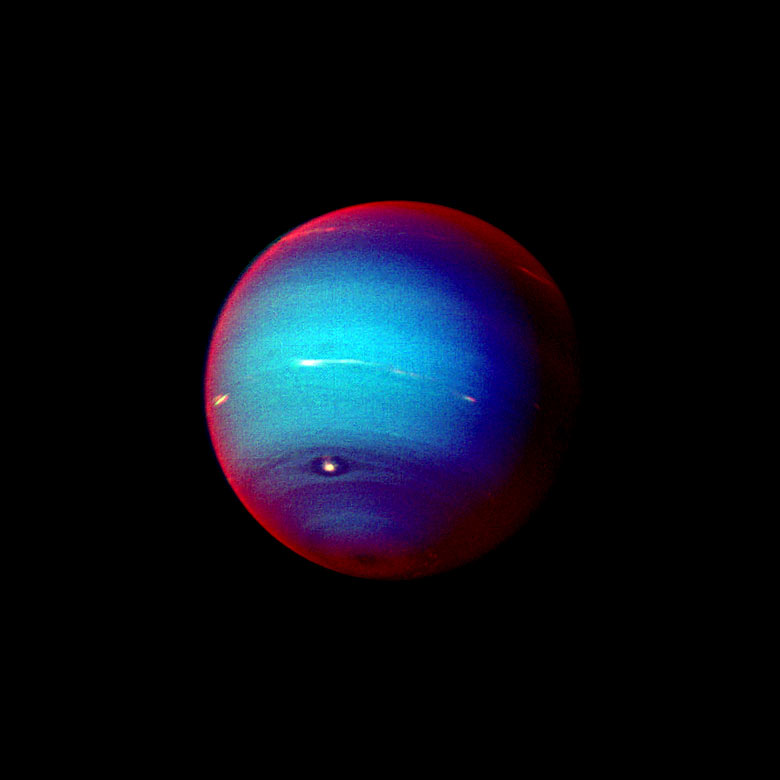
Neptune’s Great Dark Spot, accompanied by white high-altitude clouds.
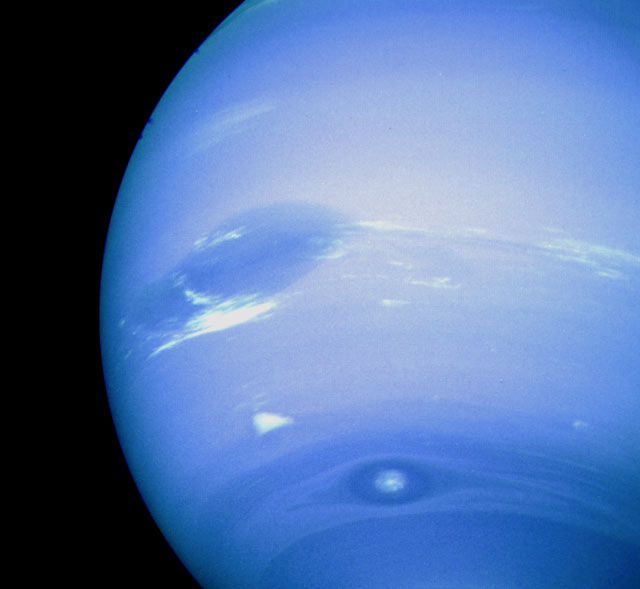
Cloud systems in Neptune’s southern hemisphere.
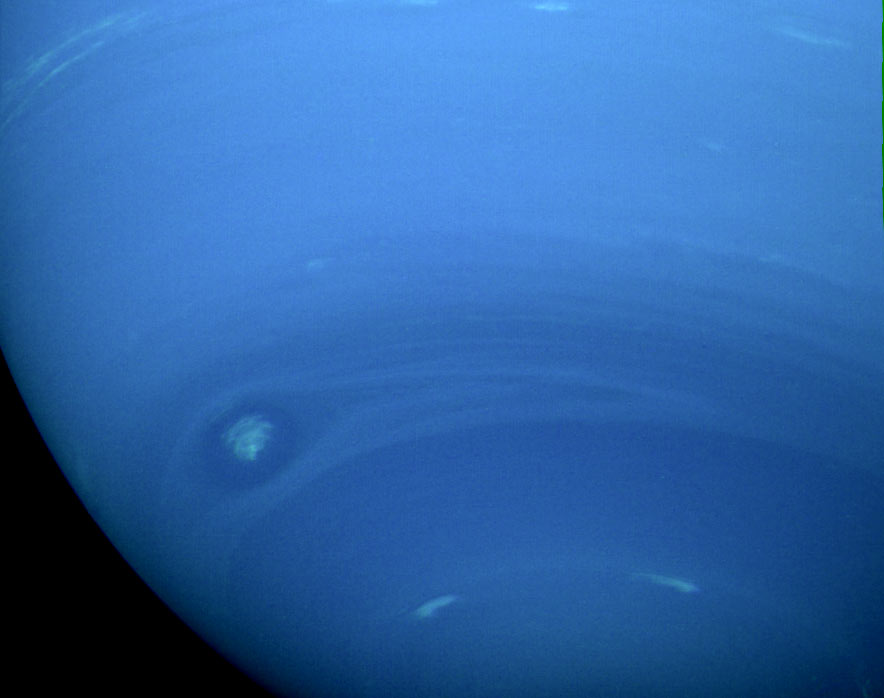
Great Dark Spot. This storm system rotates counterclockwise.
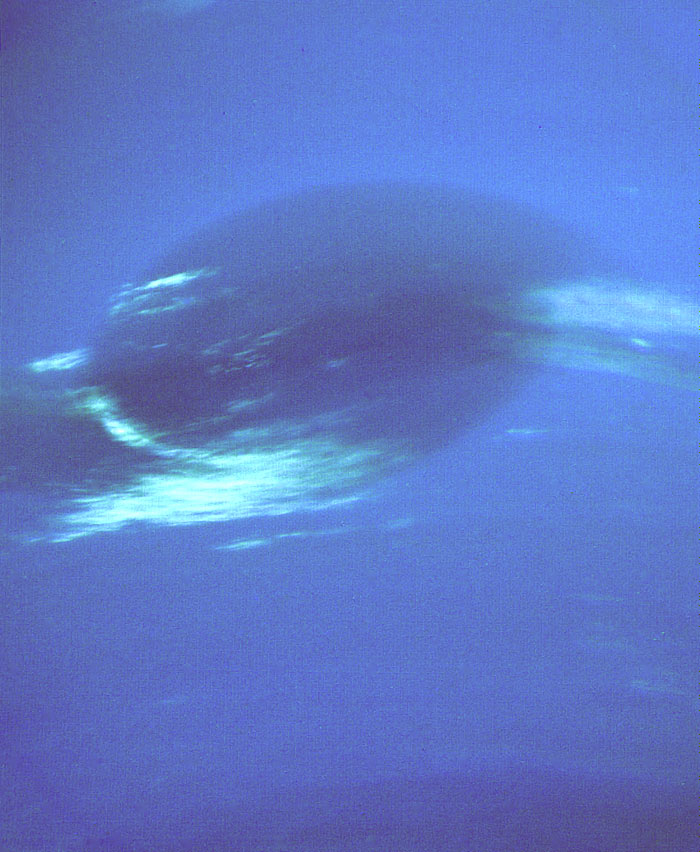
High-altitude cloud streaks in Neptune’s atmosphere.
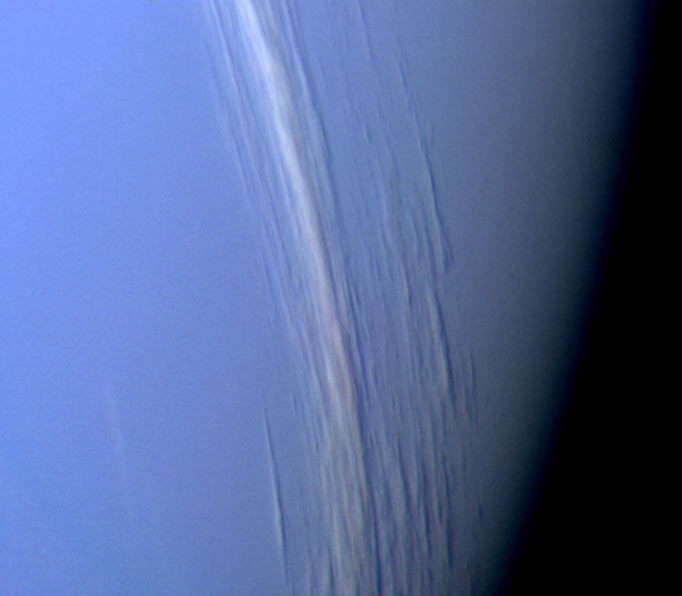
Two views of satellite 1989N2. Dark, irregularly shaped moon was discovered by Voyager 2.
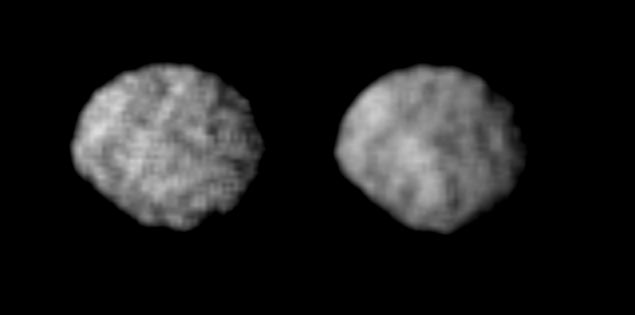
Satellite 1989N1, discovered by Voyager 2.
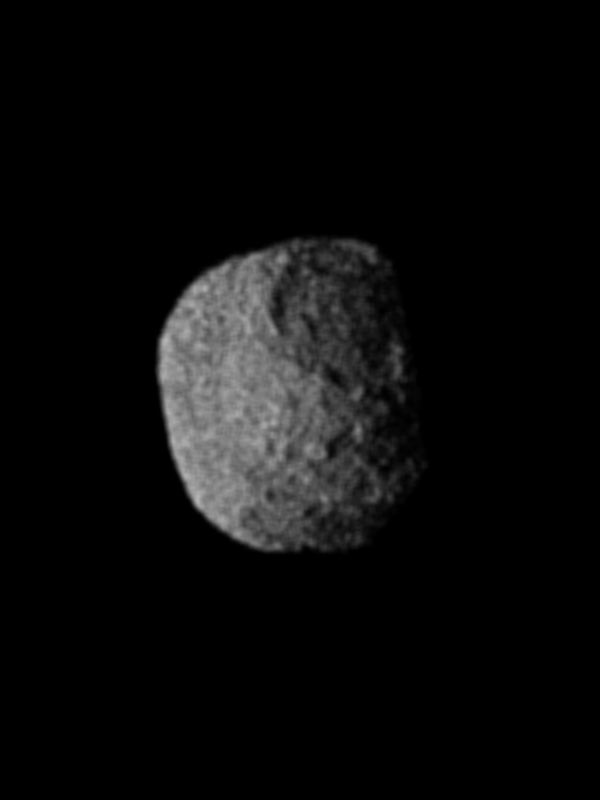
Neptune’s ring system, shown in two exposures lasting nearly 10 minutes each.
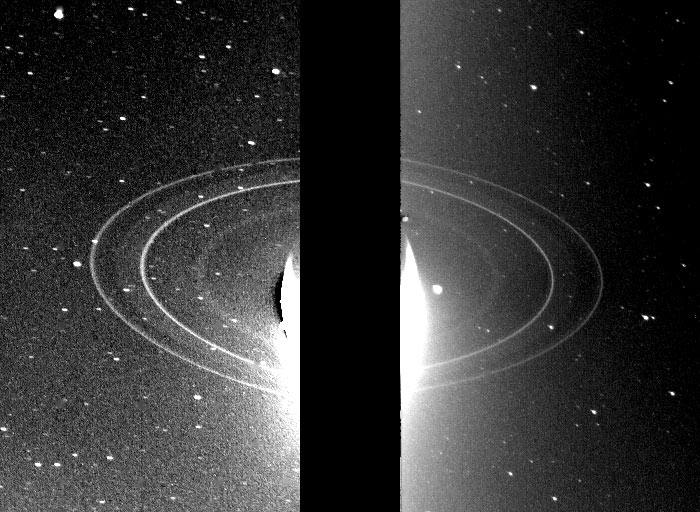
Detail of Neptune’s rings.
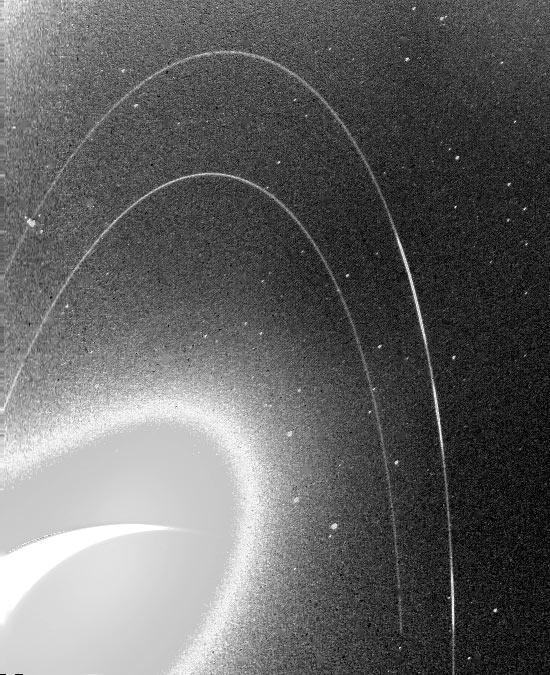
Southern hemisphere on Triton.
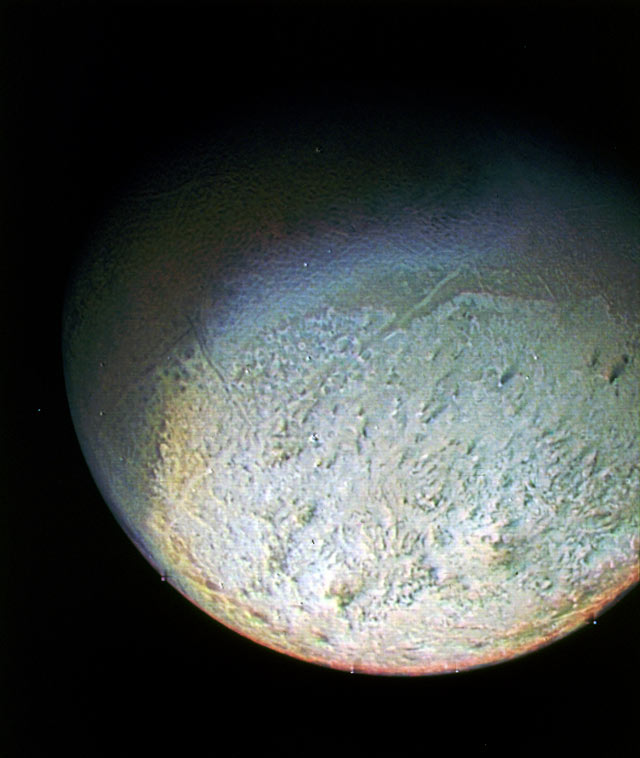
View about 300 miles across of Triton’s surface.
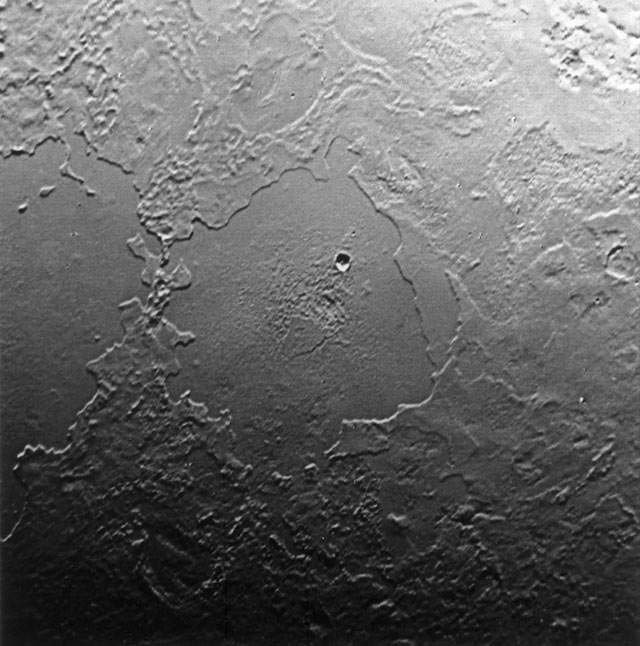
Triton from 80,000 miles. Long feature is probably a narrow down-dropped fault block.
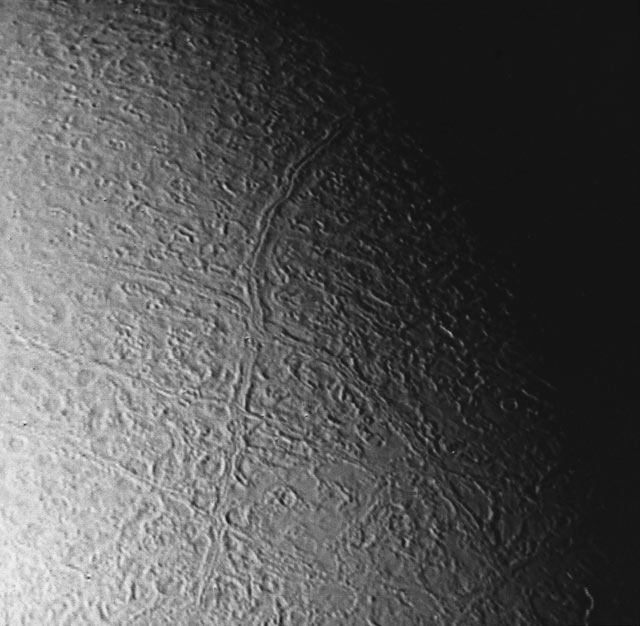
Triton’s south polar terrain. About 50 dark plumes mark what may be ice volcanoes.
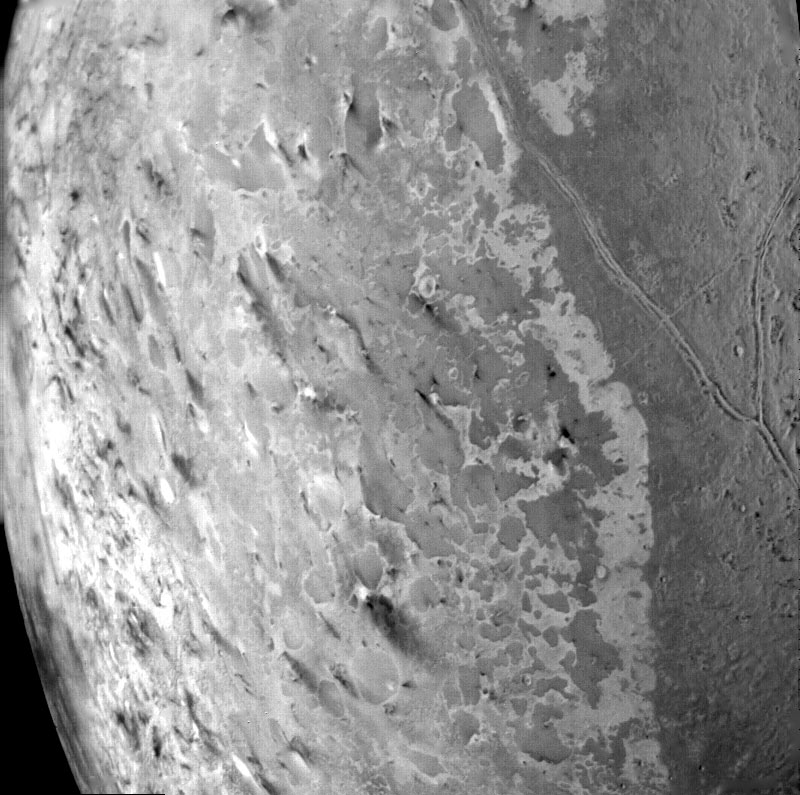
Triton from 25,000 miles. Depressions may be caused by melting and collapsing of icy surface.
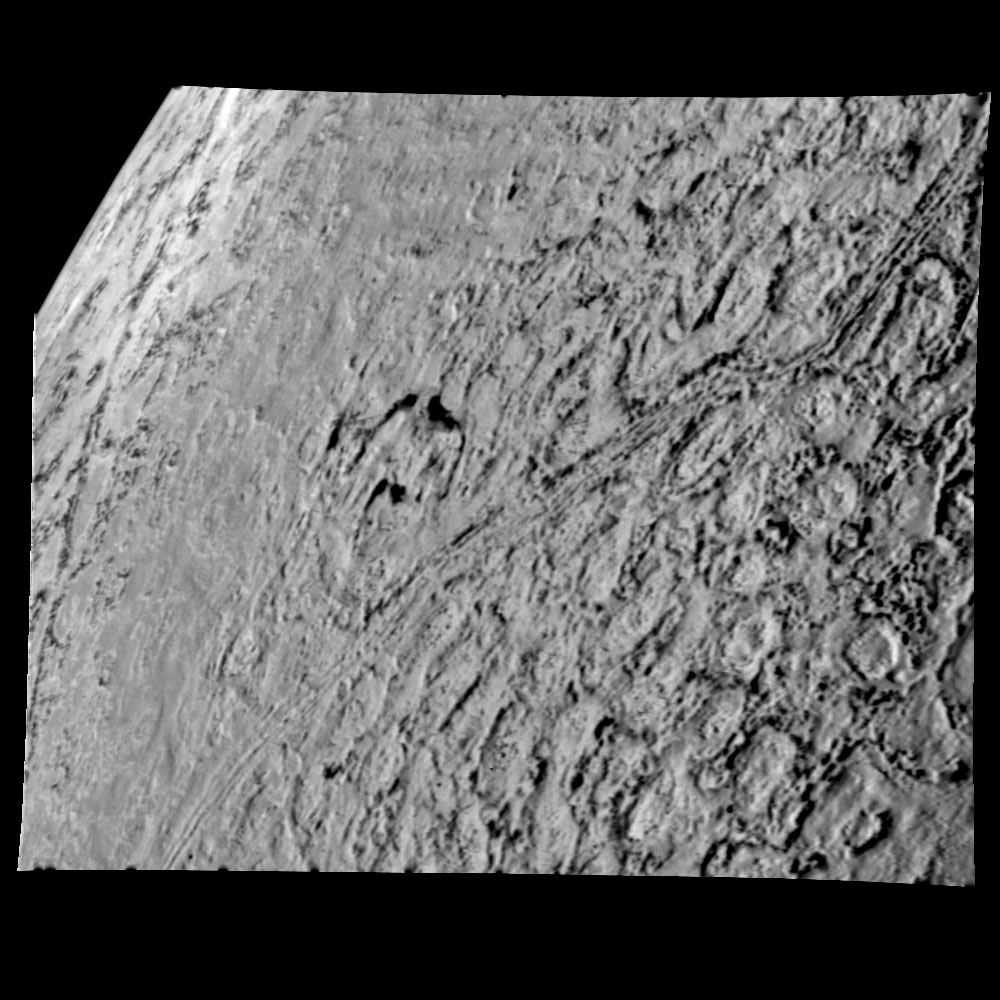
High-resolution color mosaic of Triton.
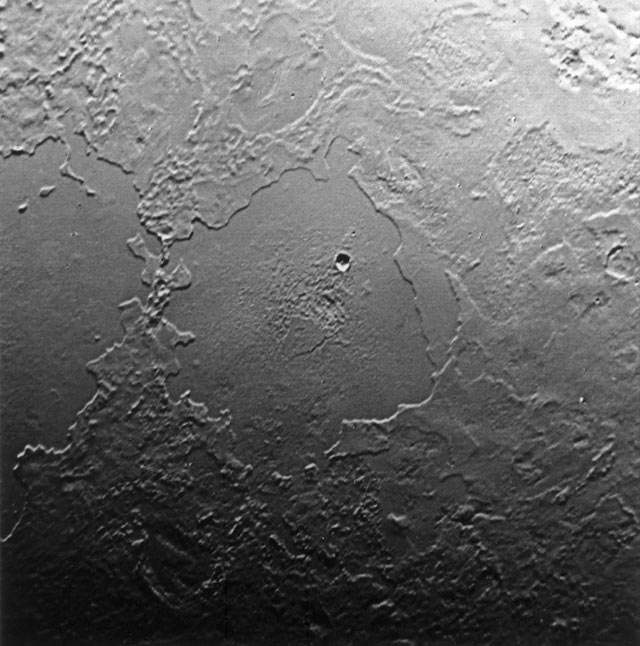
Triton just after closest approach.
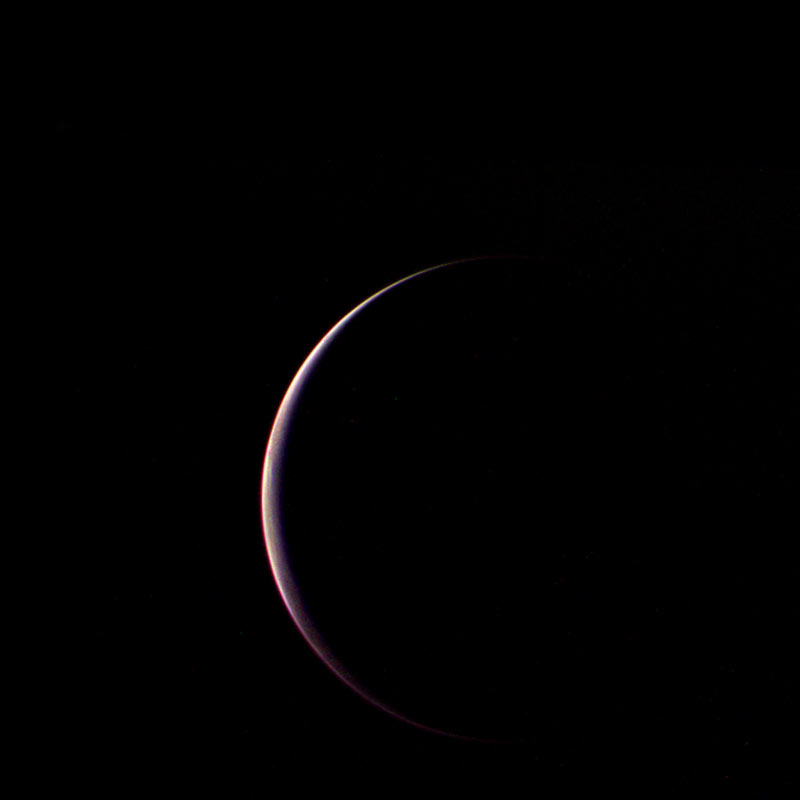
Post-encounter view of Neptune’s south pole.
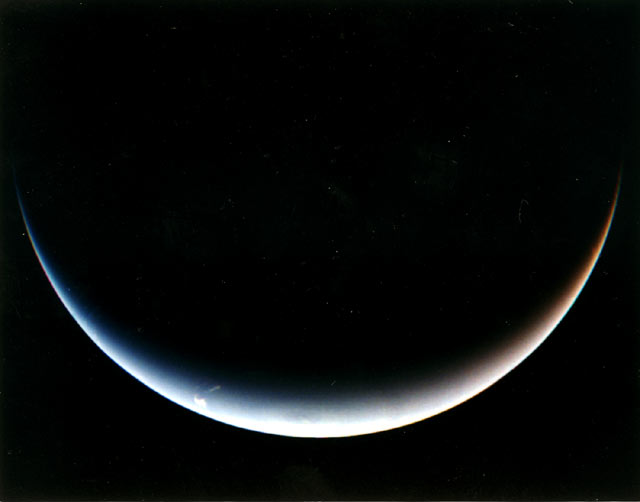
Neptune and Triton 3 days after flyby. Triton is smaller crescent and is closer to viewer.
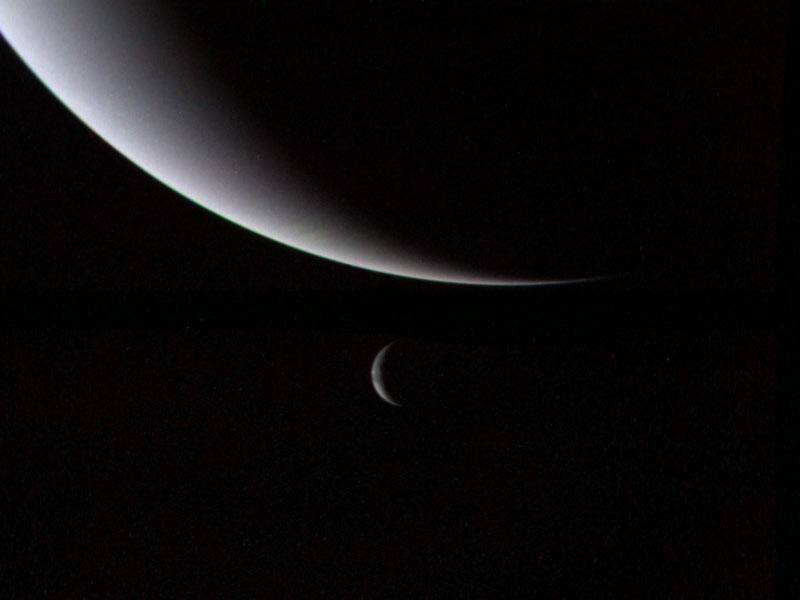

IMAGES
VIDEO
COMMENTS
Voyager 1 completed its Jupiter encounter in early April, after taking almost 19,000 pictures and many other scientific measurements. ... (50,600 miles) of Uranus's cloudtops on Jan. 24, 1986. Voyager 2 radioed thousands of images and voluminous amounts of other scientific data on the planet, its moons, rings, atmosphere, interior and the ...
Images Voyager Took. The Voyager 1 and 2 spacecraft explored Jupiter, Saturn, Uranus and Neptune before starting their journey toward interstellar space. Here you'll find some of those iconic images, including "The Pale Blue Dot" - famously described by Carl Sagan - and what are still the only up-close images of Uranus and Neptune.
Early Voyager 1 Images of Jupiter Full Resolution: TIFF (491.5 kB) JPEG (21.78 kB) 1996-09-26: Jupiter: Voyager: Imaging Science Subsystem: 400x400x3: PIA00029: First Close-up Image of Jupiter from Voyager ... Currently displaying images: ...
The Pale Blue Dot is an iconic photograph of Earth taken on Feb. 14, 1990, by NASA's Voyager 1 spacecraft. This narrow-angle color image of the Earth, dubbed 'Pale Blue Dot', is a part of the first ever 'portrait' of the solar system taken by Voyager 1.
Voyager 1 at Saturn. Saturn and its satellites Tethys (outer left), Enceladus (inner left) and Mimas (right of rings) are seen in this mosaic of images taken by NASA's Voyager 1 on Oct. 30, 1980 from a distance of 18 million kilometers (11 million miles). The soft, velvety appearance of the low-contrast banded structure and increased reflection ...
Early Voyager 1 Images of Jupiter Full Resolution: TIFF (491.5 kB) JPEG (21.78 kB) 1996-09-26: Jupiter: Voyager: Imaging Science Subsystem: 400x400x3: PIA00029: First Close-up Image of Jupiter from Voyager ... Currently displaying images: ...
This is an image of the planet Uranus taken by the spacecraft Voyager 2 in 1986. Credit: NASA/JPL-Caltech. Full Image Details. This image, taken by NASA's Voyager 2 early in the morning of Aug. 23, 1989, is a false color image of Triton, Neptune's largest satellite; mottling in the bright southern hemisphere is present.
Images Voyager took of Jupiter. Photography of Jupiter began in January 1979, when images of the brightly banded planet already exceeded the best taken from Earth. Voyager 1 completed its Jupiter encounter in early April, after taking almost 19,000 pictures and many other scientific measurements. Voyager 2 picked up the baton in late April and ...
Voyager 1 had captured images of six of the seven planets targeted as well as the Sun. About the Photographer. Voyager 1 was launched Sept. 5, 1977, just days after its twin — Voyager 2 — on Aug. 20. Because it was on a faster route to the mission's first encounter, at Jupiter, Voyager 1 overtook Voyager 2 on Dec. 15, 1977. (This was the ...
On Feb. 14, 1990, NASA's Voyager 1 probe snapped a photo of Earth from 3.7 billion miles (6 billion kilometers) away. The image shows our home planet as it truly is — a tiny, lonely outpost of ...
Refine this list of images by: Target: Mission: Instrument: Click on an image for detailed information Click on a column heading to sort in ascending or descending order ... One Voyager Out, One Voyager In (Artist Concept) Full Resolution: TIFF (2.766 MB) JPEG (65.1 kB) 2013-09-12: Sol (our sun) Voyager: 1280x720x3: PIA17049: Voyager ...
PrevPage 1 of 15. This image of the Earth and moon are in a single frame. Voyager was the first spacecraft to achieve this and captured the iconic image on Sept. 18, 1977, by Voyager 1 when it was ...
Image: NASA / JPL / Ted Stryk. Saturn as seen by Voyager 1 The last picture from Voyager 1's approach to Saturn in which the entire planet and ring system can be seen in a single frame. Image: NASA/JPL/Björn Jónsson. Voyager 2's best view of Enceladus This was the Voyager mission's best view of Enceladus, captured by Voyager 2 on August 26 ...
Voyager Index This page is provided as an index to the many images which the Voyager 1 and 2 spacecraft have taken of solar system objects. These images appear on the pages for each object.
Voyager 1 looked back at Saturn on Nov. 16, 1980, four days after the spacecraft flew past the planet, to observe the appearance of Saturn and its rings from this unique perspective. A few of the spokelike ring features discovered by Voyager appear in the rings as bright patches in this image, taken at a distance of 5.3 million kilometers (3.3 ...
Solar System Portrait. This narrow-angle color image of the Earth, dubbed 'Pale Blue Dot', is a part of the first ever 'portrait' of the solar system taken by Voyager 1. The spacecraft acquired a total of 60 frames for a mosaic of the solar system from a distance of more than 4 billion miles from Earth and about 32 degrees above the ecliptic.
Here are 18 groundbreaking photos from their incredible mission. This montage shows examples of striking images of the solar system Voyager 1 and 2 took on their missions. NASA/JPL/Insider. Nearly ...
Voyager 1 is a space probe launched by NASA on September 5, 1977, ... Image of Voyager 1 ' s radio signal on February 21, 2013. In December 2017, NASA successfully fired all four of Voyager 1 ' s trajectory correction maneuver (TCM) thrusters for the first time since 1980. The TCM thrusters were used in the place of a degraded set of jets to ...
NASA's Voyager 1 spacecraft, having completed its mission along with Voyager 2 to explore the outer planets, will use its cameras February 13-14 to take an unprecedented family portrait of most of the planets in our solar system. The collection of images will be from a unique point-of-view -- looking down on the solar system from a position 32 ...
The Pale Blue Dot - Revisited. The Pale Blue Dot is a photograph of Earth taken Feb. 14, 1990, by NASA's Voyager 1 at a distance of 3.7 billion miles (6 billion kilometers) from the Sun. The image inspired the title of scientist Carl Sagan's book, "Pale Blue Dot: A Vision of the Human Future in Space," in which he wrote: "Look again at that ...
Voyager 1 and its identical sister craft, Voyager 2, were launched on missions to study the outer solar system and interstellar space. (Space Frontiers/Getty Images) NASA engineers have succeeded ...
The Voyager 1 spacecraft is sending back a steady stream of scientific data from uncharted territory for the first time since a computer glitch sidelined the historic NASA mission seven months ago.
Images of Voyager. Get an in-depth look at the science instruments aboard the Voyager spacecraft, plus diagrams illustrating the spacecraft's trajectory, orbit and mechanics. Here you'll also find a number of artist's concepts explaining the anatomy of our solar system and the Voyagers' journey to reach interstellar space.
A NASA image of the Voyager 1 space probe, launched in 1977 to study the outer solar system and interstellar space. Photo: NASA Share on facebook (opens in new window) Share on twitter (opens in new window) Share on linkedin (opens in new window) Share on email (opens in new window ...
Image: NASA. Voyager 1, the farthest human-made craft from the Earth, is finally sending back data from all four of its scientific instruments, NASA said this week. That means the agency is once ...
On Saturday, April 5, Voyager 1 finally "phoned home" and updated its NASA operating team about its health. The interstellar explorer is back in touch after five months of sending back nonsense data.
Images Voyager Took of Saturn. The Voyager 1 and 2 Saturn encounters occurred nine months apart, in November 1980 and August 1981. Voyager 1 is leaving the solar system. Voyager 2 completed its encounter with Uranus in January 1986 and with Neptune in August 1989, and is now also en route out of the solar system. For a summary of scientific ...
Voyager 1's woes began in November 2023, when the spacecraft stopped transmitting usable data back to Earth. Rather than engineering and science data, NASA found itself faced with a repeating pattern of ones and zeroes, as though the spacecraft was somehow stalled.
The Voyager 1 spacecraft is sending back a steady stream of scientific data from uncharted territory for the first time since a computer glitch sidelined the historic NASA mission seven months ago.
Images Voyager Took of Neptune. In the summer of 1989, NASA's Voyager 2 became the first spacecraft to observe the planet Neptune, its final planetary target. Passing about 4,950 kilometers (3,000 miles) above Neptune's north pole, Voyager 2 made its closest approach to any planet since leaving Earth 12 years ago.